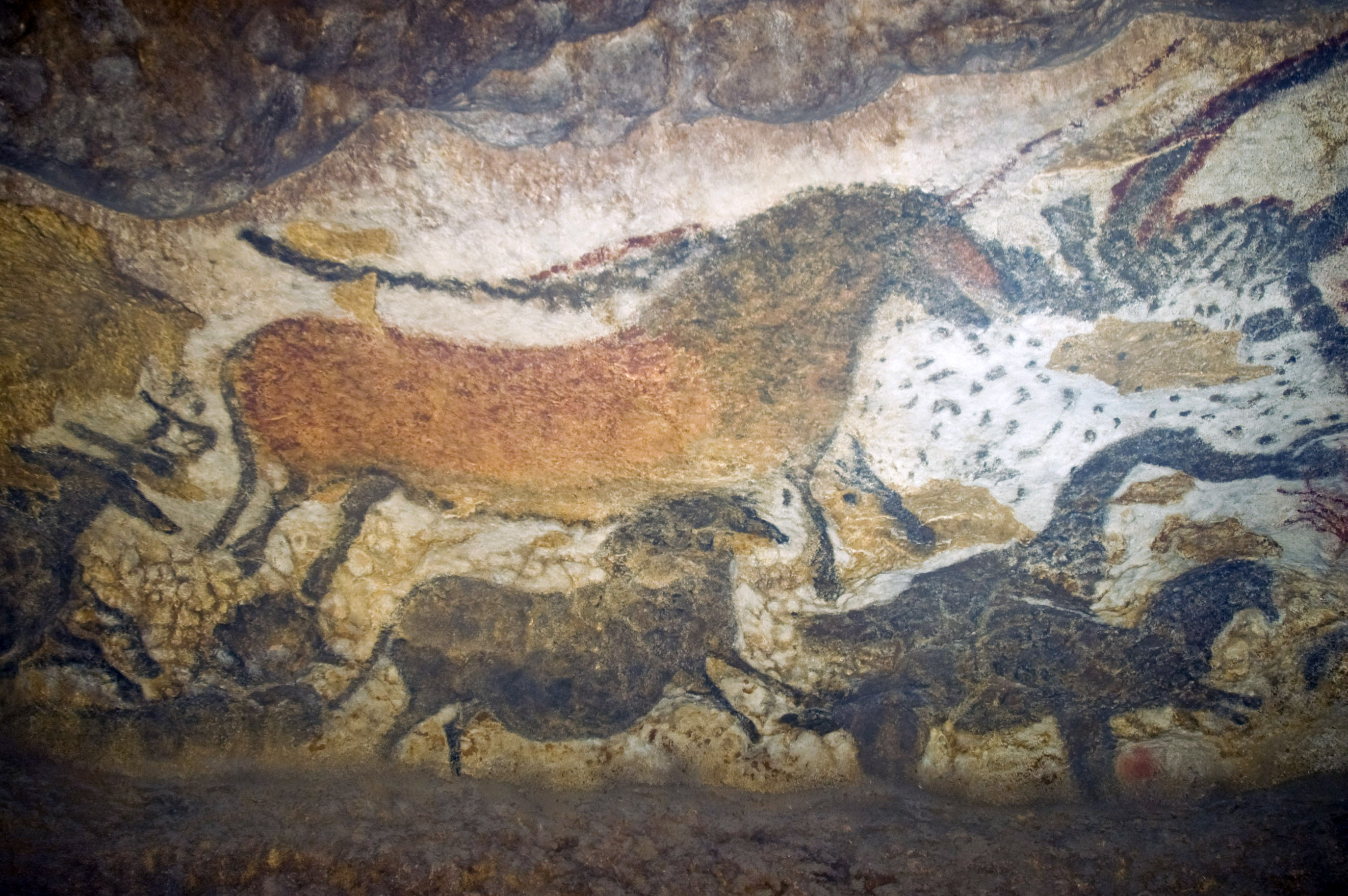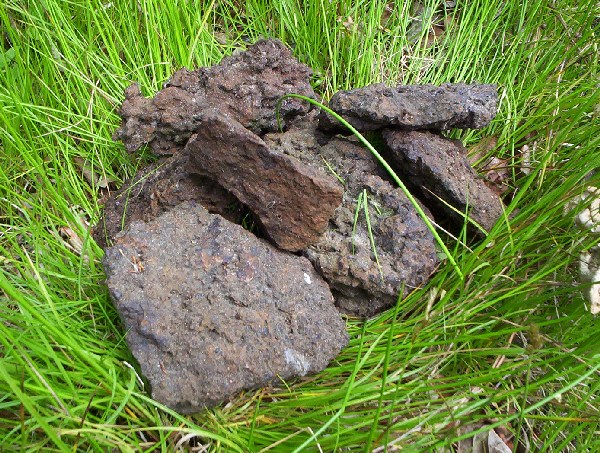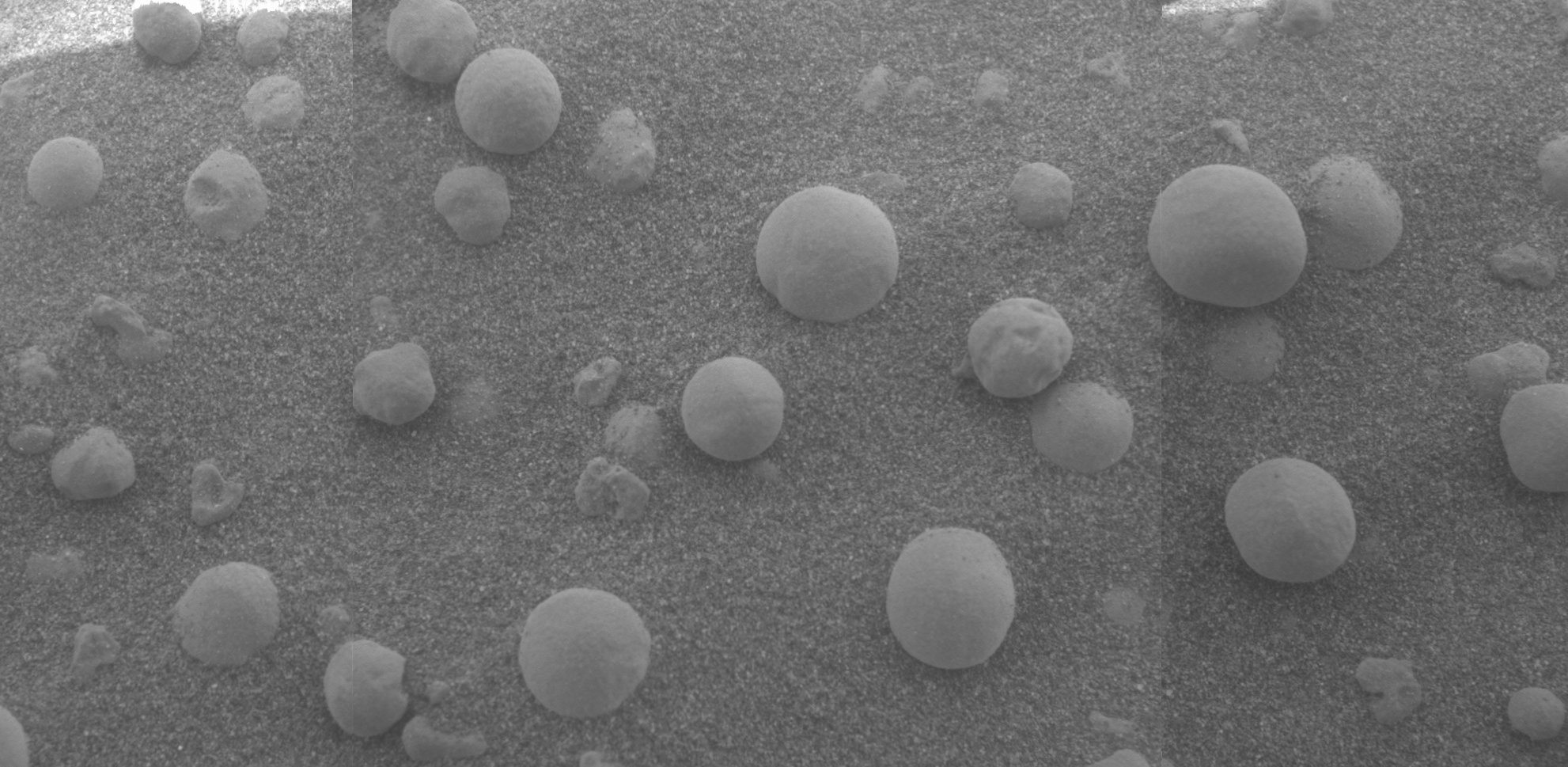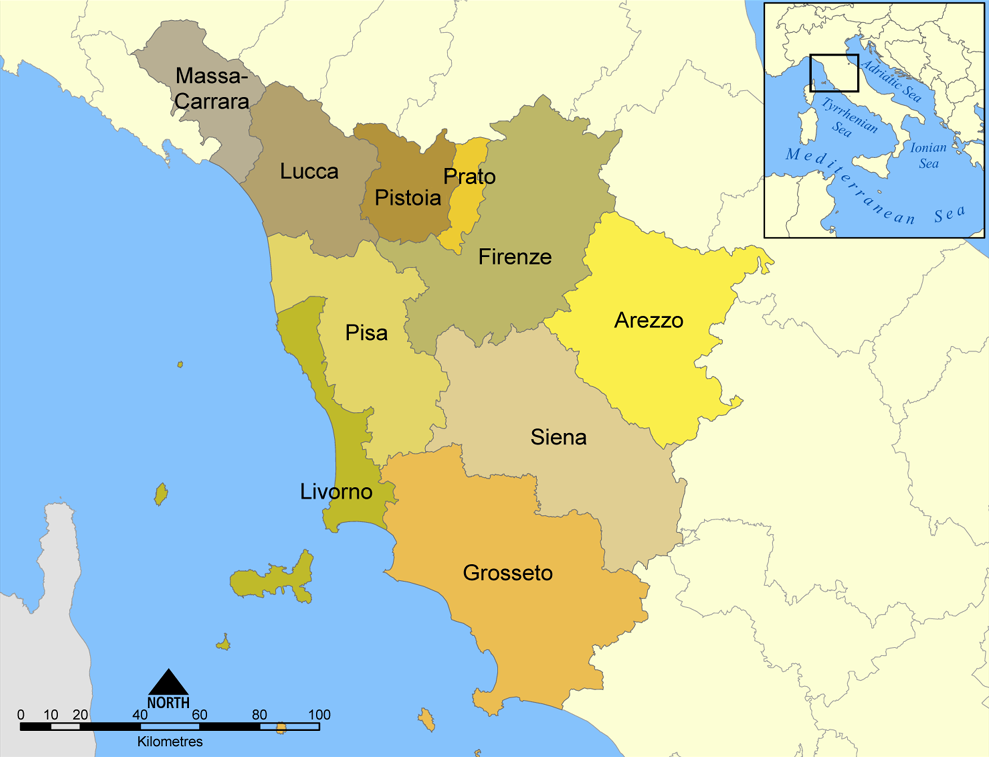|
Sienna
Sienna () is an earth pigment containing iron oxide and manganese oxide. In its natural state, it is yellowish brown, and it is called raw sienna. When heated, it becomes a reddish brown, and it is called burnt sienna.''Shorter Oxford English Dictionary'', 5th Edition (2002) It takes its name from the city-state of Siena, where it was produced during the Renaissance. Along with ochre and umber, it was one of the first pigments to be used by humans, and is found in many cave paintings. Since the Renaissance, it has been one of the brown pigments most widely used by artists. The first recorded use of ''sienna'' as a color name in English was in 1760. The normalized color coordinates for sienna are identical to kobe, first recorded as a color name in English in 1924. Earth colors Like the other earth colors, such as yellow ochre and umber, sienna is a clay which is partially composed of iron oxides. In the case of sienna, the most prevalent iron oxides are limonite (which in i ... [...More Info...] [...Related Items...] OR: [Wikipedia] [Google] [Baidu] |
Yellow Ochre
Ochre ( ; , ), iron ochre, or ocher in American English, is a natural clay earth pigment, a mixture of ferric oxide and varying amounts of clay and sand. It ranges in colour from yellow to deep orange or brown. It is also the name of the colours produced by this pigment, especially a light brownish-yellow. A variant of ochre containing a large amount of hematite, or dehydrated iron oxide, has a reddish tint known as red ochre (or, in some dialects, ruddle). The word ochre also describes clays coloured with iron oxide derived during the extraction of tin and copper. Earth pigments Ochre is a family of earth pigments, which includes yellow ochre, red ochre, purple ochre, sienna, and umber. The major ingredient of all the ochres is iron(III) oxide-hydroxide, known as limonite, which gives them a yellow colour. A range of other minerals may also be included in the mixture:Krivovichev V. G. Mineralogical glossary. Scientific editor A. G. Bulakh. — St.Petersburg: St.Petersburg ... [...More Info...] [...Related Items...] OR: [Wikipedia] [Google] [Baidu] |
Ochre
Ochre ( ; , ), iron ochre, or ocher in American English, is a natural clay earth pigment, a mixture of ferric oxide and varying amounts of clay and sand. It ranges in colour from yellow to deep orange or brown. It is also the name of the colours produced by this pigment, especially a light brownish-yellow. A variant of ochre containing a large amount of hematite, or dehydrated iron oxide, has a reddish tint known as red ochre (or, in some dialects, ruddle). The word ochre also describes clays coloured with iron oxide derived during the extraction of tin and copper. Earth pigments Ochre is a family of earth pigments, which includes yellow ochre, red ochre, purple ochre, sienna, and umber. The major ingredient of all the ochres is iron(III) oxide-hydroxide, known as limonite, which gives them a yellow colour. A range of other minerals may also be included in the mixture:Krivovichev V. G. Mineralogical glossary. Scientific editor :uk:Булах Андрій Глібович, A. G ... [...More Info...] [...Related Items...] OR: [Wikipedia] [Google] [Baidu] |
Earth Pigment
Earth pigments are naturally occurring minerals that have been used since prehistoric times as pigments. Among the primary types of earth pigments include the reddish-brown ochres, siennas, and umbers, which contain various amounts of iron oxides and manganese oxides. p. 30 Other earth pigments include the green earth pigments or , blue earth pigments such as vivianite-based "blue ochre", white earth pigments such as chalk, and black earth pigments such as charcoal. Earth pigments are known for their fast drying time in oil painting, relative inexpensiveness, and lightfastness. Cave paintings done in sienna still survive today. Production After mining, the mineral used for making a pigment is ground to a very fine powder (if not already in the form of clay), washed to remove water-soluble components, dried, and ground again to powder. For some pigments, notably sienna and umber, the color can be deepened by heating (calcination) in a process known as "burning", although it d ... [...More Info...] [...Related Items...] OR: [Wikipedia] [Google] [Baidu] |
Umber
Umber is a natural earth pigment consisting of iron oxide and manganese oxide; it has a brownish color that can vary among shades of yellow, red, and green. Umber is considered one of the oldest pigments known to humans, first used in the Ajanta Caves from 200 BC to 600 AD. Umber's advantages are its highly versatile color, warm tone, and quick drying abilities. While some sources indicate that umber's name comes from its geographic origin in Umbria, other scholars suggest that it derives from the Latin word ''umbra'', which means "shadow". The belief that its name derives from the word for shadow is fitting, as the color helps create shadows. The color is primarily produced in Cyprus. Umber is typically mined from Open-pit mining, open pits or Mining, underground mines and ground into a fine powder that is washed to remove impurities. In the 20th century, the rise of synthetic dyes decreased the demand for natural pigments such as umber. History The earliest documente ... [...More Info...] [...Related Items...] OR: [Wikipedia] [Google] [Baidu] |
Limonite
Limonite () is an iron ore consisting of a mixture of hydrated iron(III) oxide-hydroxides in varying composition. The generic formula is frequently written as , although this is not entirely accurate as the ratio of oxide to hydroxide can vary quite widely. Limonite is one of the three principal iron ores, the others being hematite and magnetite, and has been mining, mined for the production of iron since at least 400 BC. Names Limonite is named for the Ancient Greek word ( ), meaning "wet meadow", or ( ), meaning "marshy lake", as an allusion to its occurrence as in meadows and marshes. In its brown form, it is sometimes called brown hematite or brown iron ore. Characteristics Limonite is relatively density, dense with a specific gravity varying from 2.7 to 4.3.Northrop, Stuart A. (1959) "Limonite" ''Minerals of New Mexico'' (revised edition) University of New Mexico Press, Albuquerque, New Mexico, pp. 329–333, It is usually medium to dark yellowish brown in color. T ... [...More Info...] [...Related Items...] OR: [Wikipedia] [Google] [Baidu] |
Haematite
Hematite (), also spelled as haematite, is a common iron oxide compound with the formula, Fe2O3 and is widely found in rocks and soils. Hematite crystals belong to the rhombohedral lattice system which is designated the alpha polymorph of . It has the same crystal structure as corundum () and ilmenite (). With this it forms a complete solid solution at temperatures above . Hematite occurs naturally in black to steel or silver-gray, brown to reddish-brown, or red colors. It is mined as an important ore mineral of iron. It is electrically conductive. Hematite varieties include ''kidney ore'', ''martite'' ( pseudomorphs after magnetite), ''iron rose'' and ''specularite'' ( specular hematite). While these forms vary, they all have a rust-red streak. Hematite is not only harder than pure iron, but also much more brittle. The term ''kidney ore'' may be broadly used to describe botryoidal, mammillary, or reniform hematite. Maghemite is a polymorph of hematite (γ-) with the sa ... [...More Info...] [...Related Items...] OR: [Wikipedia] [Google] [Baidu] |
Limonite
Limonite () is an iron ore consisting of a mixture of hydrated iron(III) oxide-hydroxides in varying composition. The generic formula is frequently written as , although this is not entirely accurate as the ratio of oxide to hydroxide can vary quite widely. Limonite is one of the three principal iron ores, the others being hematite and magnetite, and has been mining, mined for the production of iron since at least 400 BC. Names Limonite is named for the Ancient Greek word ( ), meaning "wet meadow", or ( ), meaning "marshy lake", as an allusion to its occurrence as in meadows and marshes. In its brown form, it is sometimes called brown hematite or brown iron ore. Characteristics Limonite is relatively density, dense with a specific gravity varying from 2.7 to 4.3.Northrop, Stuart A. (1959) "Limonite" ''Minerals of New Mexico'' (revised edition) University of New Mexico Press, Albuquerque, New Mexico, pp. 329–333, It is usually medium to dark yellowish brown in color. T ... [...More Info...] [...Related Items...] OR: [Wikipedia] [Google] [Baidu] |
Haematite
Hematite (), also spelled as haematite, is a common iron oxide compound with the formula, Fe2O3 and is widely found in rocks and soils. Hematite crystals belong to the rhombohedral lattice system which is designated the alpha polymorph of . It has the same crystal structure as corundum () and ilmenite (). With this it forms a complete solid solution at temperatures above . Hematite occurs naturally in black to steel or silver-gray, brown to reddish-brown, or red colors. It is mined as an important ore mineral of iron. It is electrically conductive. Hematite varieties include ''kidney ore'', ''martite'' ( pseudomorphs after magnetite), ''iron rose'' and ''specularite'' ( specular hematite). While these forms vary, they all have a rust-red streak. Hematite is not only harder than pure iron, but also much more brittle. The term ''kidney ore'' may be broadly used to describe botryoidal, mammillary, or reniform hematite. Maghemite is a polymorph of hematite (γ-) with the sa ... [...More Info...] [...Related Items...] OR: [Wikipedia] [Google] [Baidu] |
Caravaggio
Michelangelo Merisi da Caravaggio (also Michele Angelo Merigi or Amerighi da Caravaggio; 29 September 1571 – 18 July 1610), known mononymously as Caravaggio, was an Italian painter active in Rome for most of his artistic life. During the final four years of his life, he moved between Kingdom of Naples, Naples, Hospitaller Malta, Malta, and Kingdom of Sicily, Sicily. His paintings have been characterized by art critics as combining a realistic observation of the human state, both physical and emotional, with a dramatic use of lighting, which had a formative influence on Baroque painting. Caravaggio employed close physical observation with a dramatic use of chiaroscuro that came to be known as tenebrism. He made the technique a dominant stylistic element, transfixing subjects in bright shafts of light and darkening shadows. Caravaggio vividly expressed crucial moments and scenes, often featuring violent struggles, torture, and death. He worked rapidly with live models, preferrin ... [...More Info...] [...Related Items...] OR: [Wikipedia] [Google] [Baidu] |
Province Of Grosseto
The province of Grosseto () is a Provinces of Italy, province in the Tuscany region of Italy. Its capital is the city of Grosseto. As of 2013 the province had a total population of 225,098 people. Geography The Province of Grosseto completely occupies the southern end of Tuscany, and with a territorial area of , it is the most extensive in the region and one of the least dense in population in Italy. The province is bordered to the northwest by the Province of Livorno, to the north by the Province of Pisa, to the northeast by the Province of Siena, and to the southeast by the Province of Viterbo in Lazio. To the south is the Tyrrhenian Sea, which includes the southern islands of the Tuscan archipelago, including Isola del Giglio and the smaller Giannutri islands and Formiche di Grosseto and Formica di Burano. The Arcipelago Toscano National Park spans both the provinces of Grosseto and Livorno, and includes the seven main islands of the Tuscan Archipelago: Elba, Isola del Gigl ... [...More Info...] [...Related Items...] OR: [Wikipedia] [Google] [Baidu] |
Duccio
Duccio di Buoninsegna ( , ; – ), commonly known as just Duccio, was an Italian painter active in Siena, Tuscany, in the late 13th and early 14th century. He was hired throughout his life to complete many important works in government and religious buildings around Italy. Duccio is considered one of the greatest Italian painters of the Middle Ages,Duccio ''Encyclopedia Britannica''. and is credited with creating the painting styles of Trecento Gothic art, Gothic style and the Sienese school. Biography Although much is still unconfirmed about Duccio and his life, there is more documentation of him and his life than of other Italian painters of his time. It is known that he was born and died in the city of Siena, and was also mostly active in the surrounding region of Tuscany. Other details of his early life and family are as un ...[...More Info...] [...Related Items...] OR: [Wikipedia] [Google] [Baidu] |
Rembrandt
Rembrandt Harmenszoon van Rijn (; ; 15 July 1606 – 4 October 1669), mononymously known as Rembrandt was a Dutch Golden Age painter, printmaker, and Drawing, draughtsman. He is generally considered one of the greatest visual artists in the history of Art of Europe, Western art.Gombrich, p. 420. It is estimated that Rembrandt's surviving works amount to about three hundred paintings, three hundred etchings and several hundred drawings. Unlike most Dutch painters of the 17th century, Rembrandt's works depict a wide range of styles and subject matter, from portrait painting, portraits and self-portraits to landscapes, genre scenes, allegorical and historical scenes, biblical and mythological subjects and animal studies. His contributions to art came in a period that historians call the Dutch Golden Age. Rembrandt never went abroad but was considerably influenced by the work of the Italian Old Masters and Bentvueghels, Dutch and Flemish artists who had studied in Italy. A ... [...More Info...] [...Related Items...] OR: [Wikipedia] [Google] [Baidu] |







